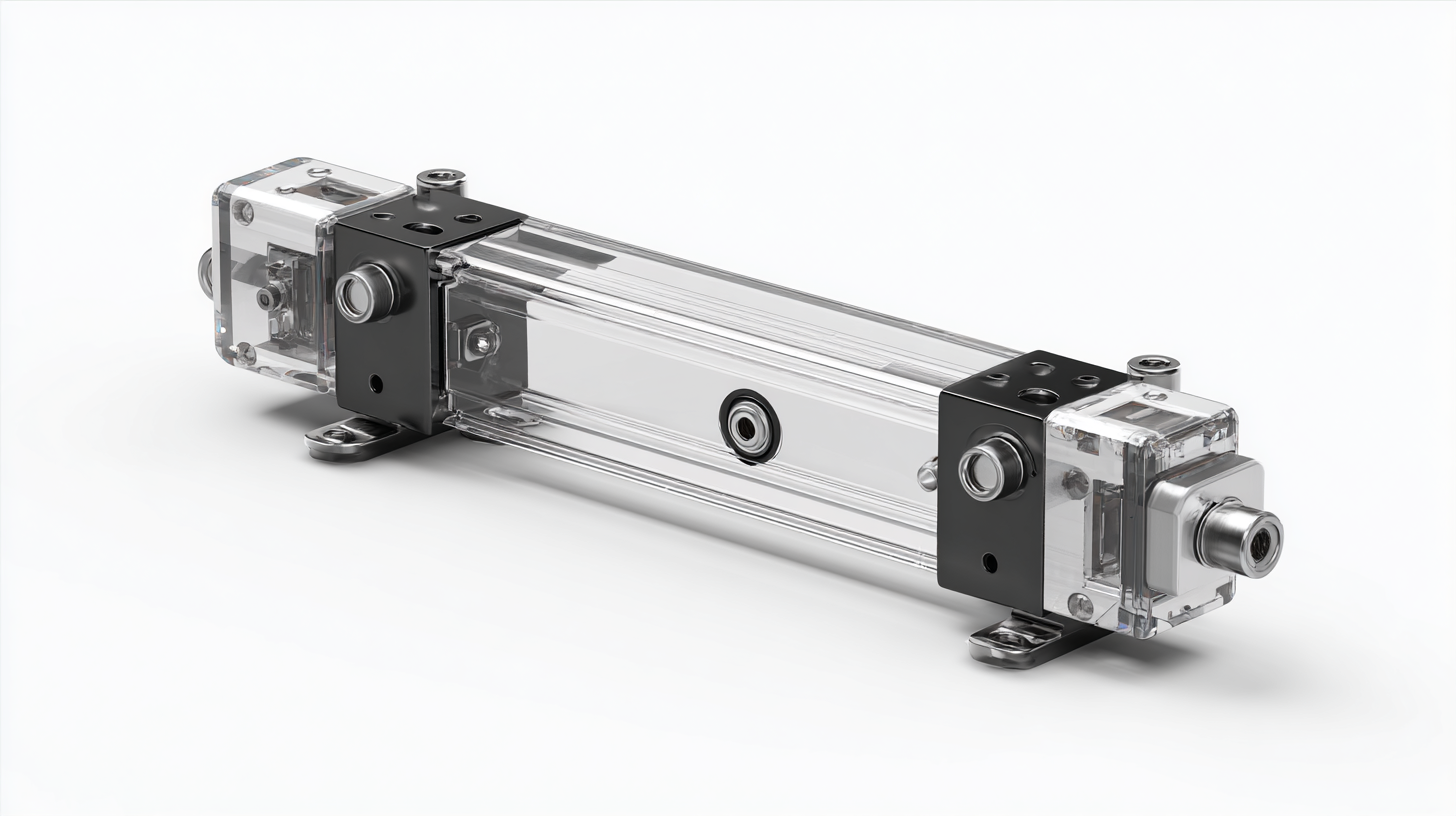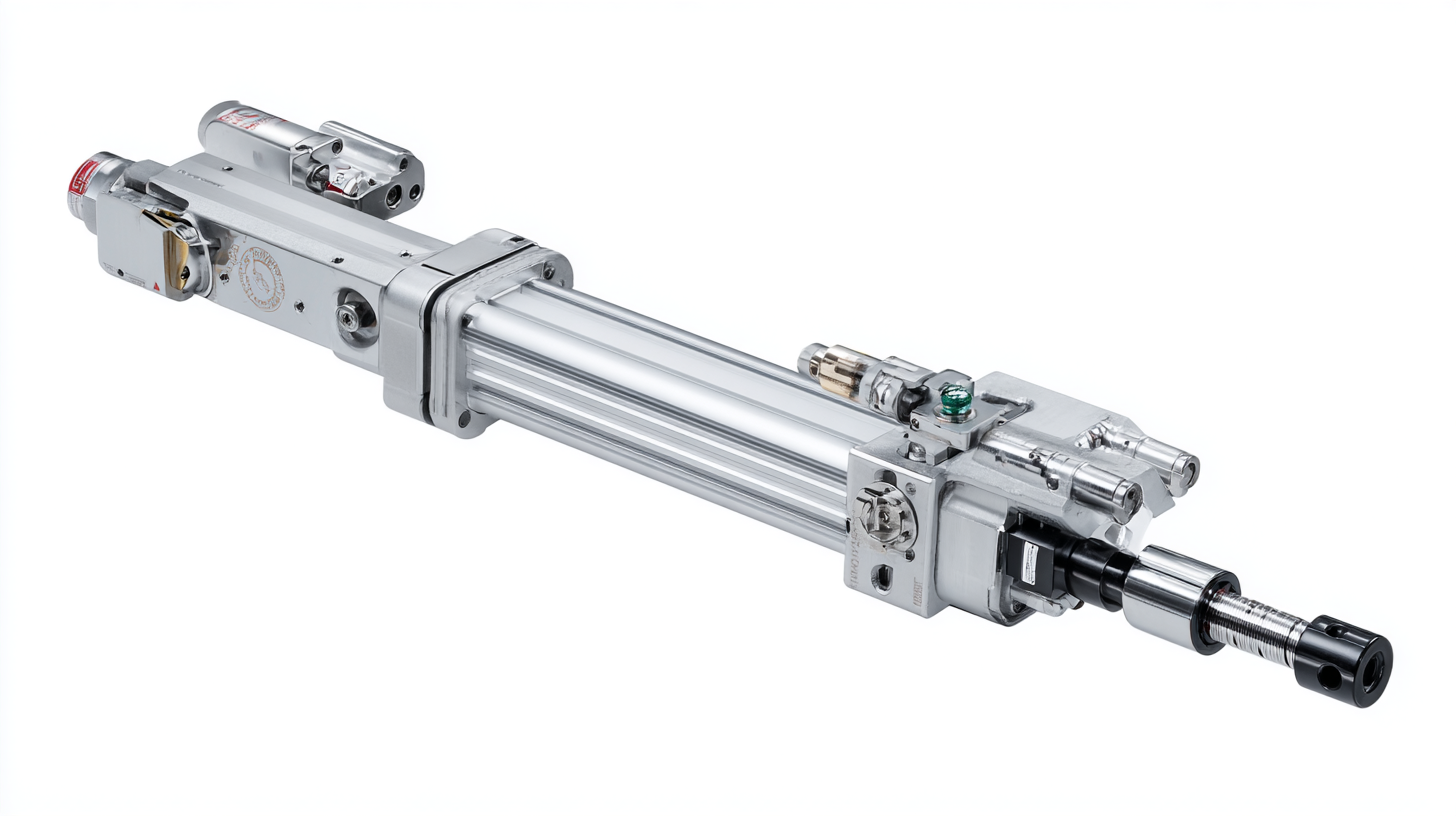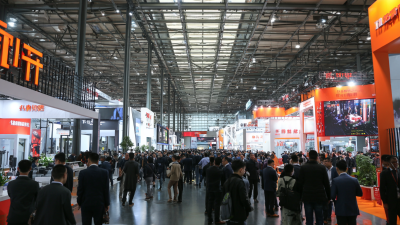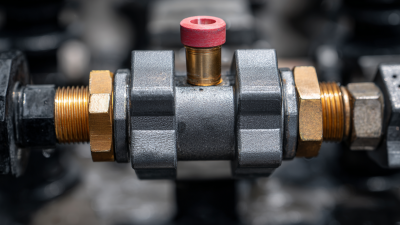Blog
Unlocking Automation: The Future of Electric Actuators in Smart Technology
The integration of electric actuators into smart technology represents a pivotal evolution in automation, heralding a future characterized by enhanced efficiency and precision. According to the Global Electric Actuator Market Report, the market is projected to grow from USD 8.2 billion in 2020 to USD 13.5 billion by 2026, reflecting a CAGR of 8.2%. This growth is stimulated by the increasing demand for automation across various sectors, including manufacturing, automotive, and renewable energy. Electric actuators, known for their reliability and energy efficiency, play a crucial role in streamlining processes and reducing operational costs. As industries continue to embrace the Internet of Things (IoT) and Industry 4.0, the functionality and versatility of electric actuators are set to unlock unprecedented opportunities for innovation and smarter solutions.

The Growing Demand for Electric Actuators in Smart Automation Solutions
The increasing demand for electric actuators in smart automation solutions is reshaping the landscape of industrial and domestic technologies. As industries seek greater efficiency and flexibility, electric actuators offer precise control, enhanced speed, and reduced maintenance needs compared to traditional pneumatic and hydraulic systems. This transition is bolstered by the rising emphasis on sustainability, as electric actuators typically consume less energy and can be easily integrated with renewable energy sources.
Moreover, the integration of electric actuators into smart technology systems enables more sophisticated automation strategies. With advancements in IoT and AI, these actuators can be seamlessly connected to smart networks, allowing for real-time monitoring and adjustments based on predictive analytics. This connectivity enhances operational efficiency and improves response times in various applications, from manufacturing processes to smart home environments. As the market evolves, the versatility and efficiency of electric actuators will continue to drive their adoption in the quest for smarter, more automated solutions.
Key Benefits of Electric Actuators Over Traditional Actuation Technologies
Electric actuators represent a transformative leap in technology, especially within the automotive sector, where the market size for automotive electronics is projected to rise significantly from $3.56 billion in 2023 to $12.22 billion by 2030. Unlike traditional actuation technologies, electric actuators are notably more compact and powerful, accommodating the growing demand for efficient, high-performance systems in advanced applications such as humanoid robotics. The miniaturization facilitated by new materials enables sophisticated designs that were previously unattainable, leading to enhanced operational efficiency and functionality.

The advent of gallium nitride (GaN) semiconductors is pivotal in this evolution, facilitating remarkable advancements in motor drives. As the robotics industry aims for mass production by 2025, GaN technology emerges as a critical enabler, addressing thermal management and reliability challenges inherent in high-voltage applications. By leveraging GaN’s capabilities, electric actuators can achieve superior performance, positioning them as essential components in the next generation of smart technology and automation solutions. This shift not only promises to elevate mechanical efficiency but also aligns with contemporary energy demands, paving the way for sustainable innovations in electric drive systems.
Market Trends: Projections for Electric Actuator Adoption in Smart Technology
The adoption of electric actuators in smart technology is projected to experience significant growth over the next few years. According to a report by MarketsandMarkets, the global electric actuator market is expected to reach USD 25.8 billion by 2026, growing at a CAGR of 5.6% from 2021. This trend underscores the increasing reliance on automated solutions in industries ranging from manufacturing to healthcare, where precision and efficiency are paramount.
Key factors driving this market expansion include the rising demand for energy-efficient systems and the integration of IoT in various applications. The Allied Market Research report highlights that the industrial automation segment held the largest share in 2022, and this trend is anticipated to continue as businesses increasingly prioritize automation to enhance productivity.
Moreover, advancements in smart technology, such as AI and machine learning, are making electric actuators even more versatile and capable of complex tasks, further propelling their adoption across multiple sectors.
Case Studies: Successful Integration of Electric Actuators in Smart Systems
Electric actuators are increasingly becoming a cornerstone in the integration of smart systems, as evidenced by numerous case studies across various industries. According to a report by Markets and Markets, the electric actuator market is projected to reach $61.5 billion by 2026, growing at a CAGR of 6.5%. This growth is largely driven by their ability to enhance automation processes in sectors such as automotive, manufacturing, and energy management.
A prime example is found in the automotive industry, where companies like Tesla have implemented electric actuators in their advanced driver-assistance systems (ADAS). These actuators not only improve the efficiency of controls for steering and braking systems but also contribute to more responsive and adaptable vehicle dynamics. Similarly, in smart buildings, electric actuators play a crucial role in automating lighting, climate control, and security systems. A case study published by the American Society of Heating, Refrigerating and Air-Conditioning Engineers (ASHRAE) demonstrated that smart systems utilizing electric actuators could reduce energy consumption by up to 30%, showcasing their potential to optimize operational efficiency while enhancing overall user comfort.
Challenges and Innovations in Electric Actuator Development for Future Applications
The development of electric actuators faces numerous challenges that must be addressed to fully realize their potential in smart technology applications. One prominent challenge is the need for enhanced energy efficiency, as traditional actuators often consume significant power, limiting their practicality in battery-operated or energy-sensitive environments. Innovators are working on advanced materials and designs that minimize energy loss while maximizing response times, paving the way for more sustainable solutions.
In parallel, there is a push towards improving the integration of electric actuators with smart systems. This requires the implementation of sophisticated control algorithms and communication protocols to ensure seamless operation within an Internet of Things (IoT) framework. Innovations in sensor technology play a crucial role in achieving this integration by providing real-time feedback on actuator performance. As the demand for automation in industries such as robotics, automotive, and smart home technology grows, addressing these challenges will be pivotal in driving the evolution of electric actuators and unlocking their full capabilities.

Related Posts
-

Exploring Duplex Strainer Innovations at the 138th Canton Fair in 2025
-

How to Choose the Right Pneumatic Valve for Your Industrial Application
-

Exploring Pneumatic Rotary Actuator Innovations at 2025 China Import and Export Fair
-

Exploring the Future of Basket Strainers at the 138th Canton Fair 2025 in China
-

Revolutionizing Industrial Automation with Cutting-Edge Pneumatic Valve Actuators
-

Understanding Hydraulic Actuators: How They Improve Efficiency in Industrial Automation by 30%
